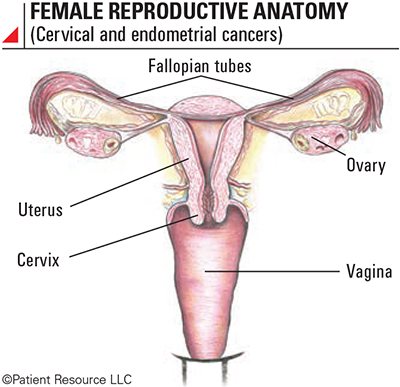Cancer Immunotherapy
Cervical Cancer
Cervical cancer affects only women. The cervix is a short, narrow channel at the bottom of the uterus that leads into the vagina. During childbirth, the cervix dilates (opens) widely to allow the baby into the birth canal.

Most cervical cancers are squamous cell cancers that grow slowly. A major risk factor for the disease is the human papillomavirus (HPV), which is now the most common sexually transmitted infection in the United States. Certain strains of HPV are more likely to cause cervical cancer.
Treatments include a number of surgical procedures, internal and external radiation therapy, chemotherapy, targeted therapy and immunotherapy.
Immunotherapy is an option for certain types of cervical cancer, which develops in the cervix, the lower, narrow end of the uterus that leads to the vagina (see Female Reproductive Anatomy). Approved as a second-line therapy, an immune checkpoint inhibitor treats recurrent or metastatic disease for women whose tumors express PD-L1 as determined by an FDA-approved test and whose disease has progressed on or after chemotherapy.



